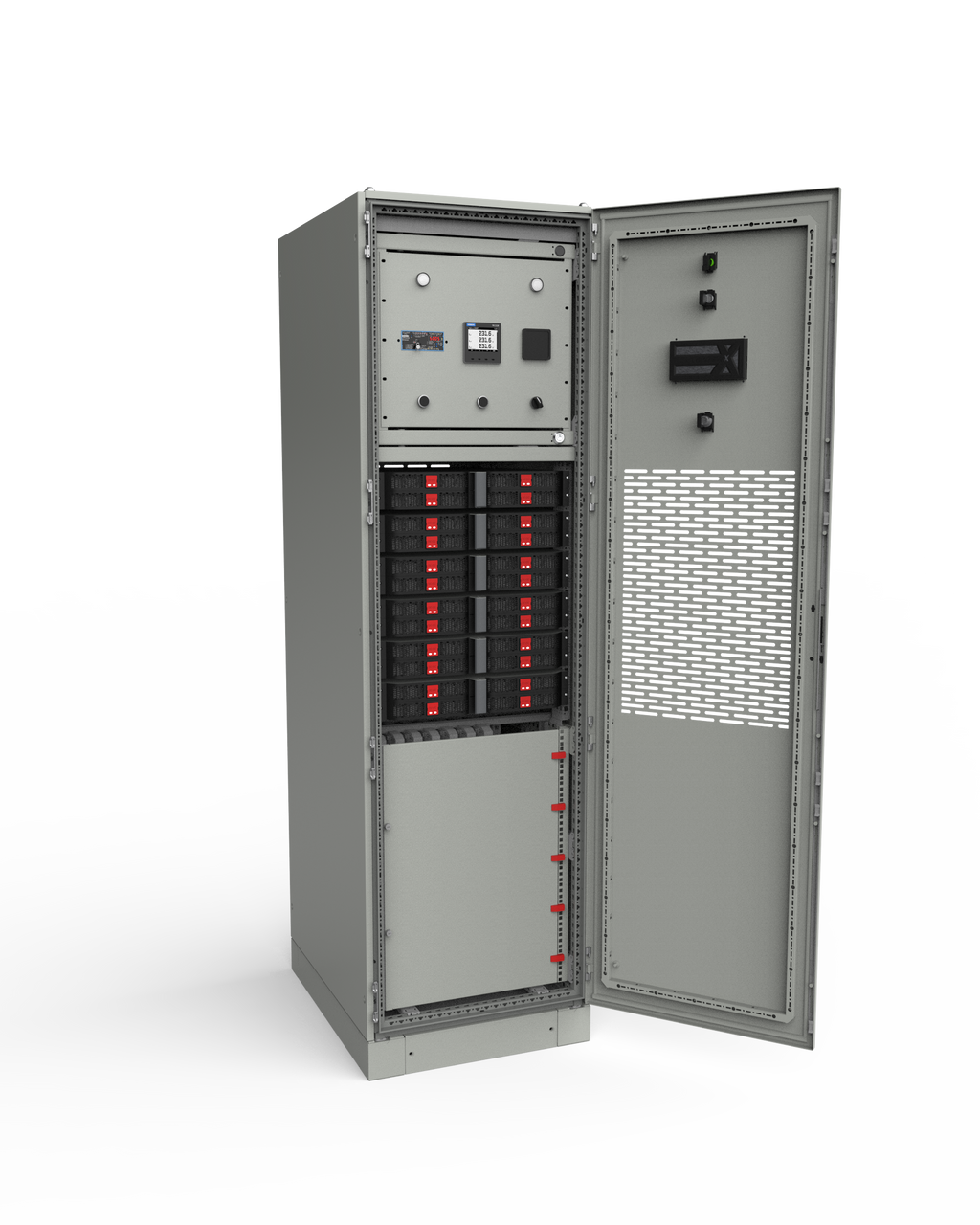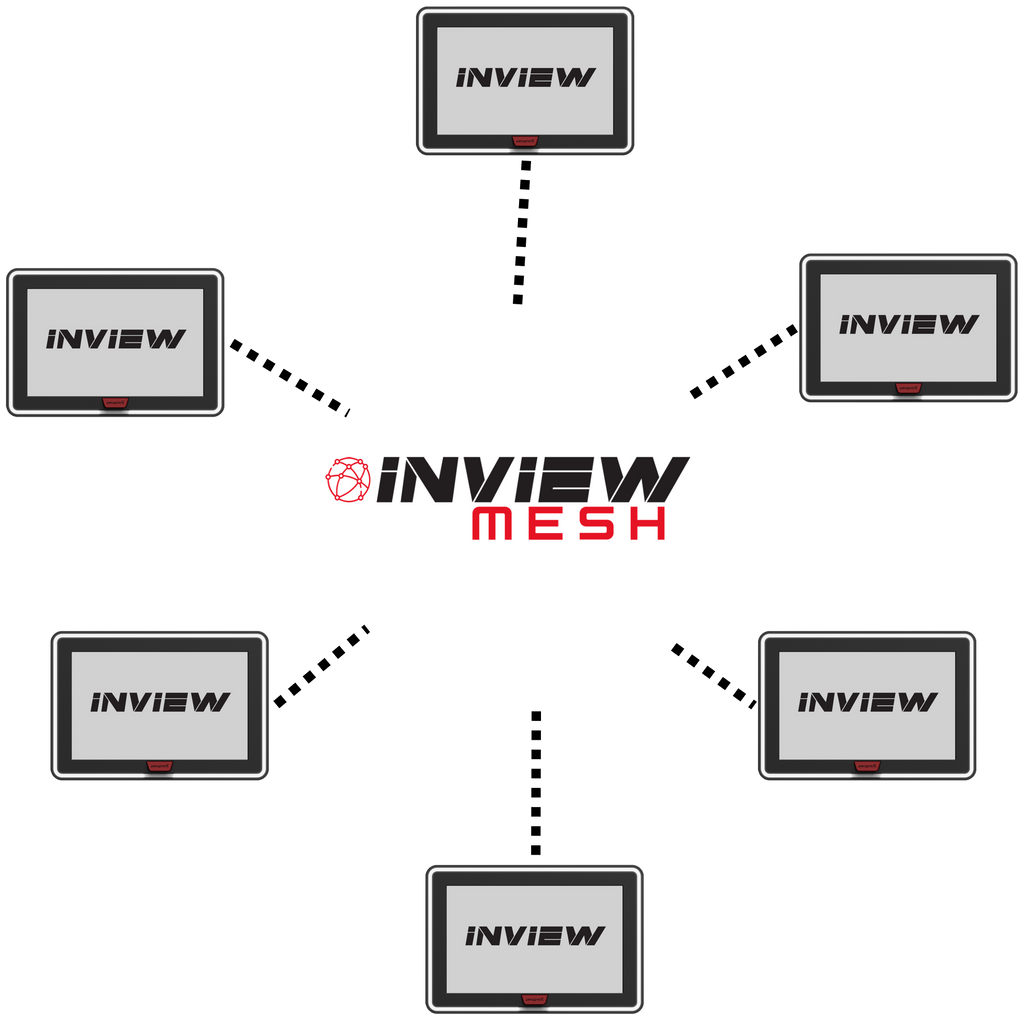Monitor one or multiple sites with one tool. It connects to CE+T and third-party devices for full visibility, smart control and simplified maintenance.
Partner Forum 2020 - Q&A
Secure AC and DC loads, the new challenge
Answer: Up to 32 modules per system and several systems can be parallelized to reach high power. Based on customer requests, we can build systems in one-phase, two-phases or three-phases and with different configurations (N+1, N+2, 2N or A+B).
Question: What happens in case of monitoring failure?
Answer: The monitoring is not a single point of failure for the solution because the control of the power converters is embedded in each power module.
Question: How operates the module that is installed for redundancy?
Answer: All modules are operating and share the loads. In case of failure of one module, the other modules will take over the power and share the loads between them.
Question: Are there any plans to provide application for automatic server shutdown as it is common for UPS solutions?
Answer: The new Inview Cloud monitoring will integrate this feature.
Question: Will the charging be compatible with Li-Ion or Super Cap?
Answer: As long as these are used within the DC voltage range of the converter, yes it is compatible.
Solution for Outdoor and Onboard applications
Answer: The specifications wlll be, at least, IP65 to be installed in pole-mounted enclosures outside but also in severe environment.
Question: What kind of connecters are being used?
Answer: Cables are directly mounted inside the modules and have a length of 2 to 3 meters to connect everything. An accessory, a junction box, can also be offered to connect different modules in parallel.
Question: Is there a derating curve according to the temperature or altitude value?
Answer: Because there are no fans, the altitude does not apply here. Regarding the temperature, it starts at 40°C and goes up to 70°C.
Question: What is the AC voltage range?
Answer: The 230 Vac version has an AC input range of 150 to 265 Vac, with a derating from 185 to 150 Vac.
Question: Serra fanless can also be Nema 4X for critical installations?
Answer: Yes
Question: To adapt Sierra with passive cooling to NiCd batteries the DC range is recommended to have wider (16-36 Vdc for 24 Vdc version and 36-72 Vdc for 48 Vdc). Would you able to adapte the input?
Answer: Sierra in 48Vdc has DC range of 40 to 60Vdc. Sierra in 24Vdc will go from 16 to 32Vdc with derating below 20Vdc.
Question: What will be the max power of the passive versions operated in parallel ?
Answer: We can go up to 32 modules in theory but most of the customers will go up to 3 to 4.
IoT, the possibilities
Answer: Yes
Question: Will previous Inview be upgradable to this new version 5.0?
Answer: Yes, all the Inview in the field after version 2.02 can be upgraded.
Question: How can Inview support a BMS from a battery manufacturer?
Answer: The scripting engine can be used to implement the communication with the BMS. CE+T can also implement new BMS based on customer requests quite easily with this new platform.
Question: Sierra 10 has TCPIP Modbus protocol for communication?
Answer: Our Inview GW solution has this protocol communication.
Question: Does your monitoring support remote monitoring?
Answer: Inview monitoring support local and remote communication
Next generation of Power Cabinet and associated battery chemistry
Answer: Lead-Acid and NiCd use classical CCCV algorithm (constant current, constant voltage). For NiZn, we use a dedicated algorithm we build with the battery manufacturer. NiMH also use the CCCV algorithm (at least for the battery presented). Li-Ion also uses CCCV algorithms, but battery manufacturers have their own BMS.
Question: Does this cabinet also exist in three-phase configuration?
Answer: Yes, 230 Vac is the voltage of the power converters, but the system is three-phase 400 Vac.
Question: When you have several cabinets in parallel, how many Inview monitoring do you need?
Answer: If you have two systems in A + B, you will have two Inview in total. Same for 2N configuration. But if you have a large “single” system, only one Inview is needed.
Question: What data can we collect from and send to a BMS?
Answer: We can retrieve any data that are available from the battery BMS such as, but not limited, to SOC, SOH, Voltage, Current. We can also receive set point such as required charge current or voltage for proper battery management.
Question: Is it possible to have a three-phase AC input in one shelf and a common DC input?
Answer: We are currently releasing a shelf with 3 modules, each connected to one phase, for our Sierra and Bravo solutions. This will be available soon.
Secure remote sites via a HVDC Bus
Answer: We use DC/DC converters with embedded algorithms to control the voltage between the batteries. Inview monitoring also controls the energy sharing between the batteries.
Question: How long the cable between the global system and the remote antenna?
Answer: 1,6km (= 1mile) for our Metro Grid solution. There is a voltage drop of about 100V at the end of the cable but this drop is acceptable for the loads in the business case we presented.
Question: This HVDC solution will work with the new Inview?
Answer: Yes, it is fully compatible.
Question: Regarding high voltage, remote powering, how the RFT-V and RFT-C applies with only one wire?
Answer: We do not need to apply these rules. We use a single pair of new wires for this HVDC solution for this 5G telecommunication application.
Question: For datacenter application, when battery sharing, how is this sharing done?
Answer: Battery will share their capacity using the redundant UPS available.
Question: It will work in a small area in 1-2 km on the Airport in the one or more factories
Answer: The distance is limited by the drop of voltage. Either we increase to section or reduce the power. We have tested 10kW power up to 1 miles (1,6km) with 100VDC drop voltage.
Question: What about legislation? Is the legislation the same across Europe.
Answer: Related to the safety of 400VDC the safety is related by an IEC standard and therefore not related only to local regulation which more focus on the installation and protection of the person depending if the access to the site is controlled or not.
Energy Management, the new opportunity
Answer: For the Iris DC/DC converter, we have two types: 48/380 (40 to 60Vdc) and 380/380 (200 to 400Vdc). The Stabiliti works from 100 to 500 Vdc.
Question: What is the battery technology used into the containers?
Answer: The battery depends on the use case and the location (environment). We use mostly Lead-Acid and Li-Ion battery but we always look for the best fit for each case.
Question: What kind of supervisor is used for them?
Answer: Inview monitoring will be the supervisor used with the all range of converter including Stabiliti.
Question: How big system can be directly connected to the grid?
Answer: Stabiliti allow to connect up to 8 units synchronized in grid forming mode to create micro-grid with or without grid connection
Question: Do you have more information about E>H2 conversion in order to generate Hydrogen?
Answer: Yes, there are different companies delivering hydrogen solutions.
Question: Network operators demand the provision of reactive power from on-grid Energy Storage. They also demand the right to control the energy flow, e.g. by influencing the main frequency. Will this be possible with the current CE+T Energrid solutions?
Answer: The frequency control mechanisms are indeed supported with our EMS provider. The converter do complies with grid connection regulation UL1741 and soon EN50449 + AS4777.2.
Question: Can the Stabiliti be used as off-grid solution (Solar/battery/Stabiliti)?
Answer: The Stabiliti operates in grid-following, grid forming and off-grid mode.
Question: You showed some battery cabinets. Are they available products?
Answer: Yes, we already tested different batteries from different suppliers and made the integration.
Question: Any plans yet to include AS/ZNS4777.2 compliance?
Answer: Stabiliti is currently under certification for EN50549 and AS4777.2. This shall be completed in June 2020
Question: Is MPPT integrated in microgrid solutions?
Answer: Yes, the Stabiliti has the MPPT function available.
Question: Does the cabinet range have a seismic zone 4 rating option?
Answer: NextGen cabinet presented does not comply with EQZ4 but CE+T does have cabinet capable to accommodate 32 modules Sierra and compliant with EQZ4










